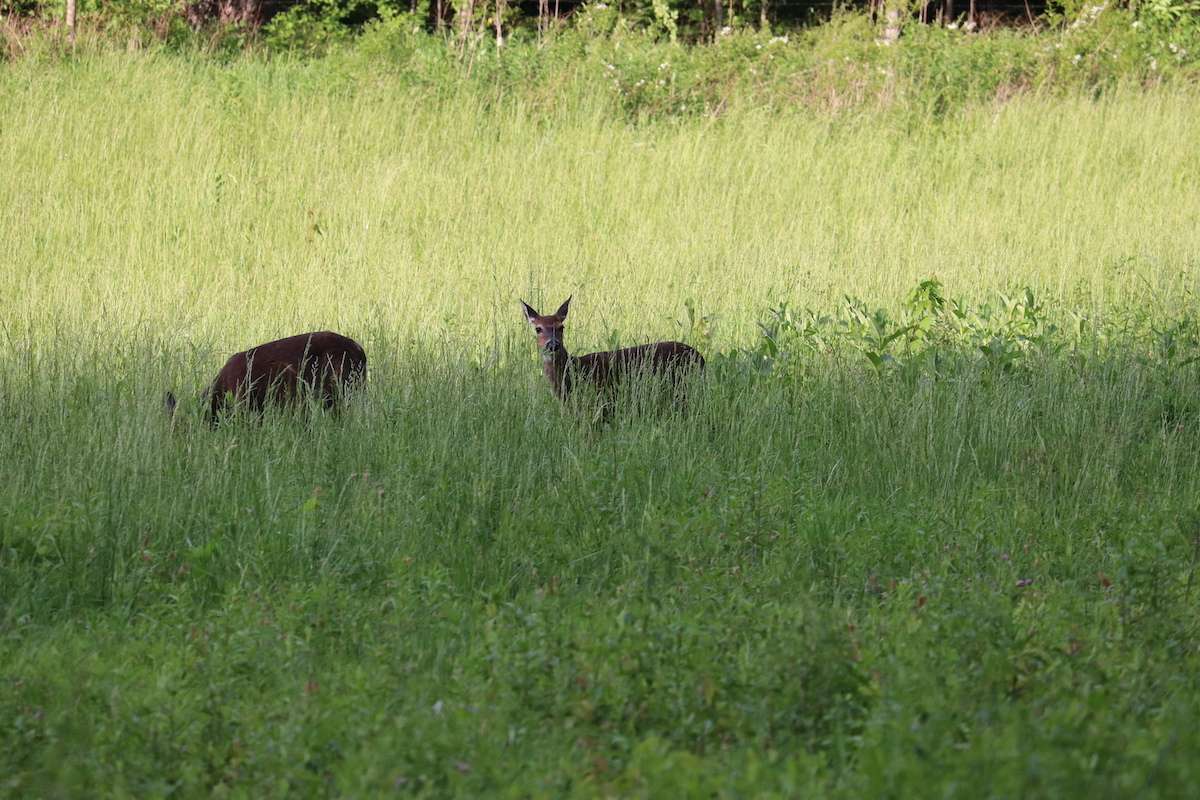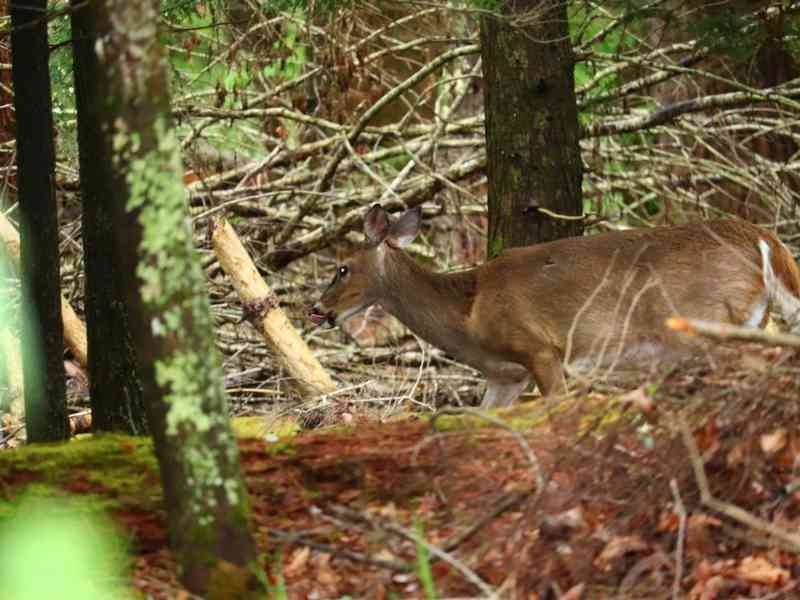In many ways, the whitetail is a slave to its stomach. Virtually every aspect of a deer’s daily routine is impacted by its need for sufficient nourishment.
Whitetail deer have been observed traveling great distances to locate quality feed in the dead of winter when typical forage is in short supply.
Both bucks and does also tend to be quite patternable during much of the year, as they return to a preferred food source time and time again.
Hunters can exploit a deer’s need for sustenance when attempting to scout and hunt with the utmost efficiency. However, to do so, one must first understand the dietary habits of the whitetail from one season to the next.
Additionally, it also pays to recognize the various discrepancies between the diets of deer from differing regions.
Contents (Jump to Topic)
ToggleWhat Do Deer Eat Seasonally?
The following is a season-by-season breakdown of the typical whitetail diet, including details regarding favored food sources by individual location.
Spring
The spring is a time of renewal in the whitetail’s world. The yearly “green-up” commences as temperatures begin to rise following extended periods of bitterly cold weather.
New growth begins to emerge where none had existed just weeks prior. Finally, food starts to become far more plentiful.
However, these are far from the only changes that spring brings. The spring is also fawning season, bringing about additional nutritional needs for the average doe, which require as much as 14%-22% protein intake during lactation.
Likewise, bucks also require increased nutritional intake during the spring as they enter a period of antler regrowth.
In the spring of the year, deer lean heavily upon fresh browse, forbs, and native grasses as their food sources of choice, in most areas of the country.
Deer also flock to any trees that are actively producing fruit during this time of year. In parts of the west and midwest, deer congregate in large alfalfa fields, feeding heavily within quality pastures.
read.. Top Public Land Hunting Tactics
Summer
There is no shortage of forage during the summer months at the average whitetail’s disposal. Wooded areas are now fully draped in the greenery of every perceivable type, and unmowed fields grow to impressive heights.
However, during this time of the year, deer find certain food sources far more palatable than others.
In heavily wooded regions of the east, deer readily consume fast-growing vine-based plants, such as Virginia Creeper.
In pasture grounds to the west, deer forage heavily in freshly clipped fields, which tend to be more palatable than mature-growth grasses.
This is especially true when red or white clover is present, both of which tend to be relatively high in protein during this time of the year.
Above all else, deer flock to agricultural fields during the summer months to raid meticulously planted crop fields.
According to the USDA, approximately 92.7 million acres of corn were planted nationwide during the 2021 growing season, leaving plenty of food for whitetails to forage on.
Deer also consume a significant amount of soybeans during the late summer months.
Fall
As fall descends upon the rural areas of America and the air begins to cool, the whitetail’s dietary habits again change.
During the earliest fall days, deer continue to feed upon standing crops, such as corn and soybeans, leading all the way up to the point of harvest.
Any waste grain left behind following the harvest is quickly consumed by any deer within a given area.
However, the true fall food source of choice for whitetails in much of the eastern woodlands comes in the form of the annual mast crop.
Deer quickly abandon agricultural fields and take to the woods, searching for freshly dropped acorns.
Studies conducted by the Mississippi State Deer Lab indicate that mast accounts for up to 28% of a deer’s diet during the fall months.
In most open areas of the west, deer continue feeding heavily within well-maintained pastures. This is especially prominent when several varieties of clover are present, most of which continue growing even in moderately cold weather.
This provides a predictable source of green, palatable vegetation well into the fall.
Winter
Available forage tends to dwindle during the winter months, as consistent frosts across most of the country kill off most annual crops while forcing perennials into dormancy.
This presents tough conditions for most whitetail deer, especially in northern climates where prolonged periods of bitter cold are standard rather than an anomaly.
Food can even become scarce in many southern regions during abnormally cold winters.
In the earliest portion of winter, deer often continue scavenging for any remaining mast that has been deposited on the forest floor, such as acorns.
As these “leftovers” become few and far between, deer begin turning more heavily toward cold-tolerant forages, such as certain clover varieties. Turnips are also a favorite of deer during the cool season, which carry an average protein content of 15%-20%.
Across the United States, many farmers also plant cool-season cover crops, such as oats and winter wheat.
These agricultural crops are not only nutritious but relatively palatable and well-tolerated by deer in most areas.
In fact, oats and winter wheat often account for a significant chunk of a whitetail’s winter diet in both the west and midwest regions.
Conclusion: Follow The Food
One of the most valuable tools at any whitetail hunter’s disposal is a solid understanding of a deer’s dietary habits and nutritional needs.
Deer are hardwired to seek out quality forage, perfectly suited to maintain their body condition and prevent hardship during periods of peak physical demand, such as that experienced during the spring fawning season.
Hunters can capitalize upon this knowledge by gearing their hunting and scouting efforts toward intercepting deer traveling to and from their favored seasonal food sources.
Such foresight often proves to be the missing link between good intentions and the success for which every hunter strives.
Sources:







